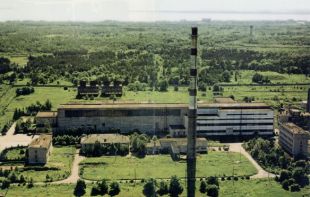Baltic States – CIS, Energy, Estonia, Financial Services, Legislation
International Internet Magazine. Baltic States news & analytics
Saturday, 27.12.2025, 22:58
Permanent storage of radioactive waste from Paldiski to cost EUR 70 mln
 Print version
Print version |
|---|
"Experts estimate that construction of final storage, dismantling of the reactors and their storage will cost around 70 million euros," head of the Environment Ministry's climate and radiation department Evelyn Muursepp told BNS on December 14th.
International experts' recommendation is to dismantle the reactors by 2040 at the latest and instal them in a designated final storage place. "This means that a decision on building a final storage place in Estonia has to be made at the political level already next year and a respective environmental impact assessment has to be launched in the next few years," Muursepp said.
Preliminary international studies running from October 2014 till the end of this year will determine the best ways to render the Paldiski reactors and other radioactive waste harmless. The research started with support from structural funds of the European Union, it costs over one million euros and final results will be known in January 2016. "The preliminary studies are conducted by the Lithuanian company Eksortus who brought in also Russian experts as they have the best possible know-how on such facilities," Muursepp said.
It can be said at this point that various dismantling possibilities were considered in the course of the study. Experts advised to break reactor sections into smaller pieces but store the reactor container in one piece, Muursepp said.
The experts also looked into what type of storage would be needed. According to Muursepp, in view of economic and environmental aspects, they judged a near-surface storage facility to be the most practical option.
Paldiski housed a Soviet nuclear submarine training center in 1968-1989. It included a submarine mock-up with two nuclear reactors that contained nuclear fuel.
Estonia undertook in 1994 to make the facility safe as part of an agreement with Moscow that served as the basis for the withdrawal of Russian troops from Paldiski. "The Russians took nuclear fuel with them but under the agreement we have to cope ourselves with the dismantling and storage of the reactors," Muursepp said.








 «The Baltic Course» Is Sold and Stays in Business!
«The Baltic Course» Is Sold and Stays in Business!

